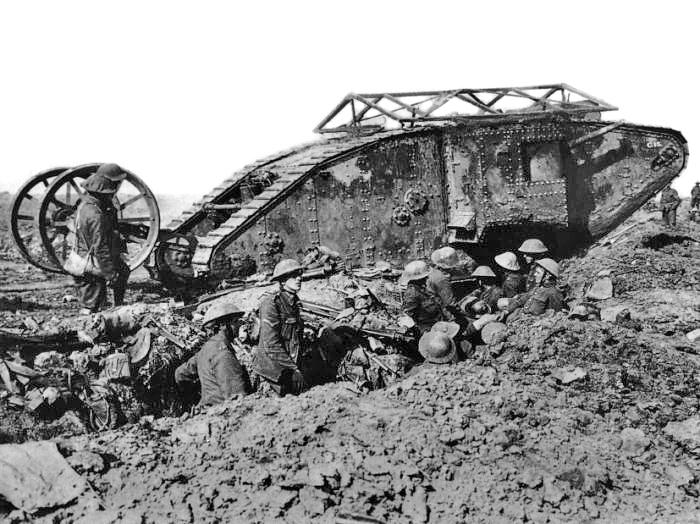The November 1918 ceasefire on the Western Front came as a shock to Britain and France. Both nations weren’t expecting Germany to surrender so suddenly. Due to this premature end to the war, the British had one plan up their sleeve that was never realised.

‘Plan 1919’ was the brainchild of Major-General J.F.C. Fuller and promoted a new type of warfare. Both sides were fast exhausting their reserves of men and resources and war could not last much longer without a change of pace. Under ‘1919’, an all new spring offensive would be initiated to finally crush the German Empire. Here’s what was planned to happen:
-Increased role of tanks such as the new Mark VIII

– Winchester 1897 pump action shotgun (trench gun)

-Lighter and more efficient machine guns such as the Lewis Gun

-Air support for all offensives
-Use of Adamsite (DM) chemical warfare that broke through German gas masks
The ‘1919 plan’ would aim its attacks at German communications and cut the head of the snake so the body would die. This would restrict the lost of life on the battlefields of Western Europe.
It will never be known how effective these methods would have been but Fuller’s ideas were innovative for the time and were a precursor of what was to come in the Second World War. Some experts are of the opinion that, although never implemented, Plan 1919 would have formed the basis for later blitzkrieg tactics and the Soviet theories of Deep Battle and Deep Operations.
If you want to know more about the First World War, check out the brand new digital bookazine that has everything you need to know about the Great War.
Get yours here

The All About History Book Of The First World War explores the battles, spotlights the soldiers, and considers significant figures as well as the people back home, examining what relationships were like between all involved. The words and imagery are accompanied by historical artefacts that, combined, truly paint a picture of what life was like during the First World War.
